Introduction
You step off the JR Yamanote Line. It’s just another station at first.
Then the shutters open. Giant LCD screens flash. Maid flyers are pressed into your hand before you even speak. A robotic voice greets you from a vending machine.
And boom. You’re in Akihabara Electric Town.
It’s not just a destination. It’s an overload.
This article includes affiliate links that do not incur additional charges for you. I may receive a modest commission if you click on them and make a purchase.

Chapter 1: Akihabara Electric Town Unveiled
The Soul of Akihabara
Akiba, or Akihabara, is an area within the Chiyoda ward of Tokyo. It’s dubbed a paradise for electronic and anime lovers worldwide; however, there are many other aspects to it.d When I saw Akihabara electric town for the first time, I was in amazement because of its spark and dynamism. My exit from Akihabara Station left me with a taste of the large billboards, the roaring sounds in gaming arcades, and the colorful dolls that filled the shop windows.
The History of Akihabara
Akihabara Electric Town got its name after World War II. Back then? It was all about radios, wires, and repair shops. Tinkerers and engineers rebuilt the country—one transistor at a time.
Now? It’s a different kind of electricity.
The streets pulse with anime intros. Arcade sounds echo between skyscrapers. Cosplayers in full armor wait in line beside salarymen.
Somewhere along the way, tech culture collided with otaku life. And they didn’t just coexist—they fused.
This place? It became the haven for anime freaks and hardware nerds alike.
Chapter 2: The Tech Mecca
Akihabara’s Electronic Wonderland
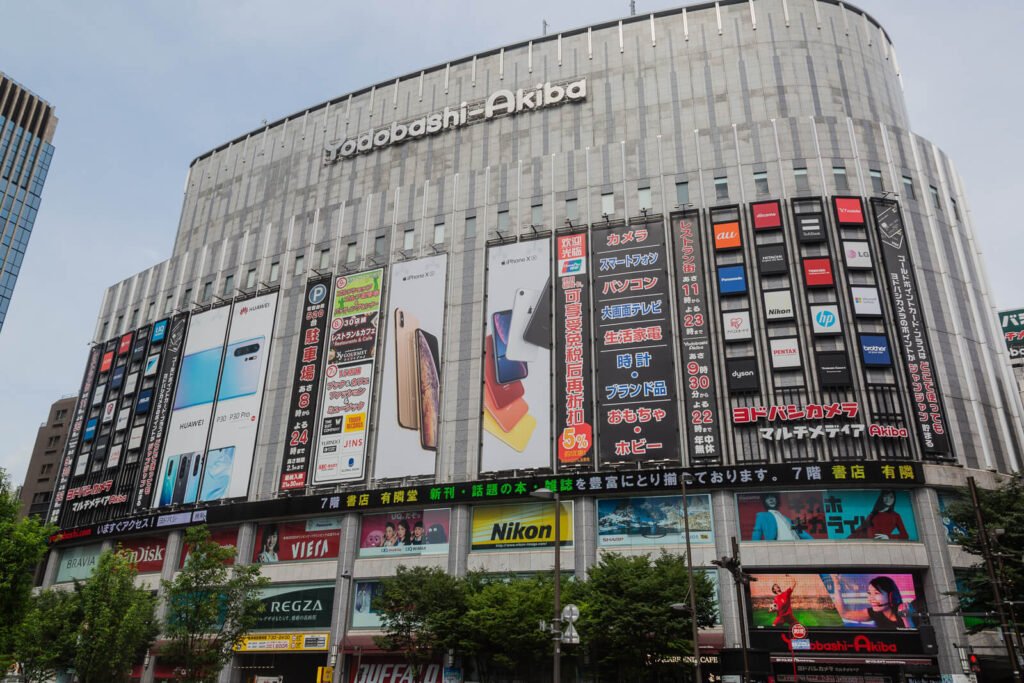
Forget malls. Akihabara Electric Town’s tech scene is spread across streets, towers, and back alleys.
Beginner Mode: Yodobashi Camera Akiba
Nine floors. Shiny. Air-conditioned. Safe. Everything from mirrorless cameras to robotic vacuum cleaners. There’s even a restaurant floor up top.
They’ve got gaming PCs, Apple stuff, phones, printers—if it plugs in or boots up, it’s here. And tax-free for tourists.
Intermediate Mode: Tsukumo, Sofmap & Friends
These stores? More focused. PC parts, build kits, niche gadgets. Know what you’re looking for. Or at least pretend to.
You’ll find GPUs next to neon keyboards. External SSDs stacked like candy bars. DIY VR kits. It’s not laid out like Best Buy. But it works.
Expert Mode: Akiba Backstreets
Now we’re talking. The real Electric Town lives in the alleys.
Parts shops. Wire sellers. Component resellers. Handwritten labels. Bargain bins. Some stuff doesn’t even have English on it. You buy it anyway.
You’ll meet engineers. Retro tech nerds. Probably someone who rebuilt a PS1 into a toaster.
Half of it looks like junk. The other half is genius.
Personal Anecdote: The Quest for Retro Gaming
Go up a tiny staircase behind a Gachapon wall and boom—Super Potato.
This place is retro gaming nirvana.
Original Famicoms. Dreamcasts. Japanese Pokémon cartridges in mint condition. CRT TVs running 16-bit classics.
The walls are stacked with history. Touch a game cartridge, and you’re back in 1997. With sticky fingers. And your older cousin yelling at you for screen-watching.
Wanna go to Japan? Find affordable flights here.
Chapter 3: The Otaku Oasis
Manga, Merch, and Madness
Start at Animate Akihabara. Eight floors. One mission: feed your fandom. Latest manga releases, pre-order-only merchandise, exclusive Blu-rays. Even doujinshi if you dare.
Then hit Mandarake. The flagship. Maze-like. Dark. Dusty. Glorious. It’s where collectors go to cry tears of joy or heartbreak. Vintage figures from the ’80s? Still in box? Found here.
And Gamers Akihabara—don’t let the name fool you. It’s anime central. Drama CDs, posters, signed art. Plus event spaces for fan meets. You might even walk into a live-streamed voice actor appearance.

Maid Cafés: Cute Meets Cringe (but in a good way?)
They call you “Goshujin-sama” or “Princess” the second you sit down. Your food? It has faces. Your iced latte? Drawn on with chocolate syrup. A cat. Or maybe Pikachu. Depends on the maid.
And yeah, it’s awkward at first. But also? Kinda heartwarming. You’ll leave smiling. Maybe blushing.
Popular spots?
Cure Maid Café (Quiet, classy, actually chill)
@Home Café (Super sweet, super polished)
Maidreamin (Tourist-friendly, picture-heavy)
Chapter 4: Beyond Electronics and Anime
Culinary Delights
Akihabara is not only about technology and pop culture. It’s a culinary destination too. It can be observed here in all aspects of Japanese cuisine, from ramen outlets to top-notch sushi dining restaurants. There are plenty of mobile stalls on the streets that sell snacks. However, I could not withstand my desire for street stalls to sell street takoyaki (octopus ball snacks) and taiyaki (fish-shaped pastry).
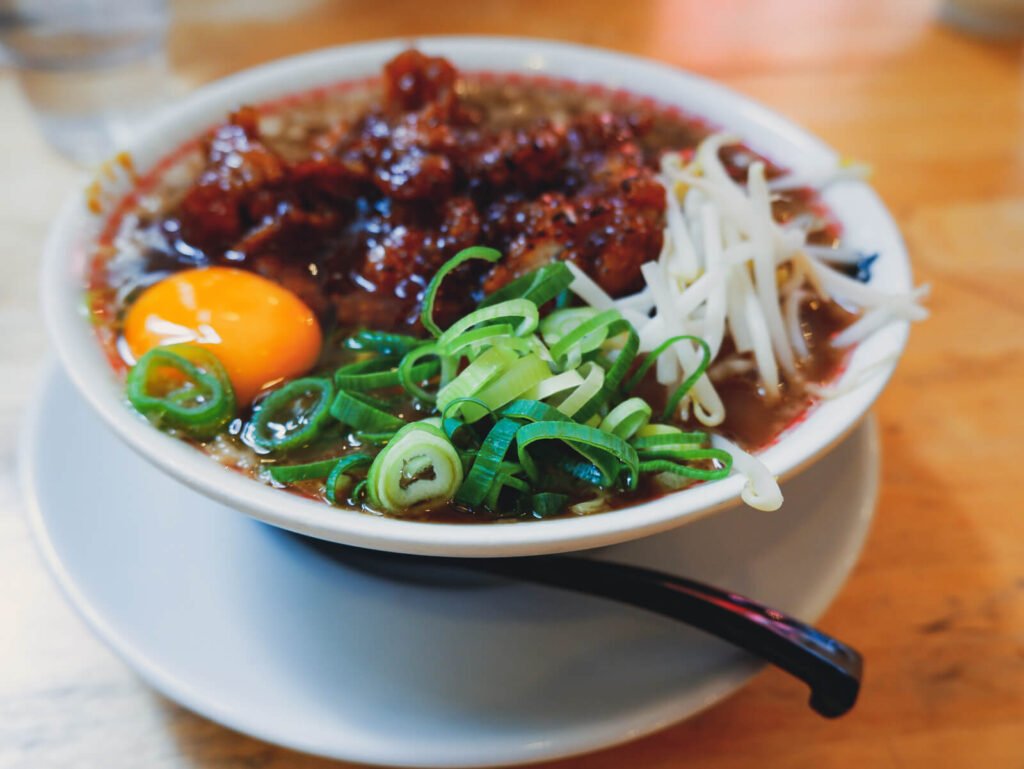
Personal Anecdote: A Foodie’s Paradise
One day, I happened across a small tonkatsu-yaki restaurant where people were lining up outside. So, I took my place in the line, and all my patience paid off with tasty, crunchy tonkatsu, which simply dissolved in my mouth. This was a reminder that Akiba is more than just the hottest tech; it’s savoring some timeless flavors of Japan.
Chapter 5: Exploring the Hidden Gems
Gaming Arcades and Themed Cafes
No visit to Akihabara can be complete without a trip to the game arcades. These are multi-story emporiums that include old retro arcade games and the newest rhythm games. I challenged myself for hours playing rhythm games, fighting virtual enemies, and even attempting to grab items inside claws loaded with anime figurines.
Themed cafés can be found in Akihabara as well. Every fan can find what they need here, from maid cafes to Gundam-themed establishments. Once, I went on a trip to a Gundam cafe that used the theme of the renowned Mechas series. These cafes are not just about the food, but rather about the immersing experience.
Chapter 6: Finding the Best Bargains
Tips for Shopping in Akihabara
There are many bargain hunting opportunities in Akihabara. Though haggling is not the norm in most shops, if you compare prices in various shops, you can get some discounts. Remember to visit the tax-free shop, especially for tourists with good prices. Make sure to inquire about the existence of a loyalty program when entering several stores as well, and provide the point cards for repeat buyers.
Chapter 7: Navigating Akihabara
Getting to Akihabara
It is so easy to get to this town! It is just a short train drive away from large Tokyo stations, including Tokyo Station, Shinjuku Station, and Shibuya Station. Akihabara Station also has connections with several railway lines.
| Transport Option | Route Details |
|---|---|
| From Narita International Airport | Take Narita Express (N’EX) to Tokyo Station. – Transfer to JR Yamanote Line to Akihabara Station. |
| From Haneda International Airport | Take Tokyo Monorail to Hamamatsucho Station. – Transfer to JR Yamanote Line to Akihabara Station. |
| By JR Yamanote Line | Akihabara Station is a major stop on the JR Yamanote Line, which encircles central Tokyo. |
| By Tokyo Metro | Take Hibiya Line (H15) or Tsukuba Express Line to Akihabara Station. Follow station signs. |
| By Keihin-Tohoku Line | Akihabara Station is a key stop on the Keihin-Tohoku Line, connecting south and north Tokyo. |
| On Foot from Nearby Areas | Depending on your location, consider walking from Ueno or Kanda, neighboring districts. |
| Useful Tips | Purchase a Suica or Pasmo card for convenient access. – Be mindful of peak hours in crowded stations. |
This table format should make it easier to reference the various transportation options for reaching Akihabara in Tokyo.
Personal Anecdote: The Akihabara Station Experience
Finding your way around Akihabara Station is also a great adventure. Anime wallpapers and advertisements decorate the walls, while the busy scene mimics how busy it is in this area of Tokyo. I frequently stopped to marvel at the different exhibitions.
Chapter 8: Akihabara by Night
Nightlife in Akihabara
Unlike Akihabara. That place wakes up in the morning, sleeps early at night. Here it’s different. Neon lights keep burning, even when the clock runs past midnight. Streets still glow, buzzing with life. Bars spill laughter. Themed izakaya pull you in with their weird charm. And karaoke joints—well, they don’t let you stay quiet. Night owls love it here. Feels like the city is telling a different story after dark. A secret side. A new viewpoint.








Chapter 9: The Future of Akihabara
Akihabara’s Evolution
Akihabara is ever-evolving. It’s no longer all about electronics and anime. Diversification of the district towards e-sports, the cyber environment, and cryptocurrency Akihabara is a meeting place for technology, entertainment, and unlimited passion for the visitor.
Wanna go to Japan? Find affordable flights here.
Chapter 10: Akihabara’s Lasting Impression
Finally, Akihabara is indeed a cultural treasure and technological wonder that one can never get tired of experiencing. From the side of the techie, the anime lover, as well as the wanderer who prefers unconventional ways of enjoyment. It is a place to excite the senses and awaken the spirit, and it stays with you long after you have left there.
Akihabara is more than a neighborhood; it’s a shrine, a cultural phenomenon, and evidence that nothing stops innovation and creativity at all costs. My time at Akihabara was an amazing adventure, so feel free to visit Tokyo’s Electrical Wonderland.
As we wrap up this adventure through Akihabara, I leave you with one piece of advice: be flexible enough to encounter something new or experience the charm of the magic hidden in Japanese Akiba. Dear readers, it has been my pleasure and honor to take you with me in the exploration of Tokyo’s intriguing Akihabara.
Wanna book a tour in Tokyo? Find tours in Tokyo here.
more from airashijapan
Navigating Tokyo Transportation efficiently
Tokyo Shibuya Crossing: The World’s Busiest Intersection
Japanese Temples: Senso-ji and Nakamise Shopping Street
Exploring Tokyo: Unveiling Top Attractions and Hidden Gems
Kichijoji: Unveiling the Charm of Tokyo’s Hidden Gem
20 Best Budget Hotels Tokyo: Affordable Stays in the Heart of Japan’s Capital
Yanaka: Old-World Charm and Quaint Streets
The Mystical Allure of the Torii Gate: A Gateway to Japanese Culture
Meiji Shrine: Journeying Through Tokyos Meiji Shrine
Exploring the Heart of Tokyo: Shinjuku
Tokyo Tower: Panoramic City Views
Omoide Yokocho: Tokyo’s Nostalgic Alley of Memories
Akihabara Electric Town : Tech and Anime Haven
Roppongi Tokyo: Fusion Hub of Culture and Nightlife
Harajuku Japan: A trendsetter’s Heaven
Tokyo Autumn 2024: The Ultimate Guide to Experiencing Fall in Japan’s Capital
Nikko Autumn: A Symphony of Colors
Best Places to See Autumn Foliage in Tokyo
Why is Akihabara famous?
Akihabara, located in central Tokyo, is famous for several reasons:
Anime and Manga Culture: Akihabara is often referred to as the “Anime Capital of the World.” It’s a hub for anime and manga enthusiasts, offering an extensive selection of stores, shops, and events dedicated to Japanese pop culture and animation.
Electronics and Gadgets: Akihabara, also known as “Akihabara Electric Town,” gained fame for its wide range of electronics and gadgets. It’s a paradise for tech-savvy individuals looking for the latest gadgets, components, and electronic equipment.
Video Games and Arcades: The district is renowned for its numerous video game stores and arcades. Gamers can explore vintage and modern video games and enjoy a variety of arcade experiences.
Maid Cafes: Akihabara is known for its themed cafes, with maid cafes being the most famous. These cafes offer a unique dining experience where waitresses dress as maids and entertain customers with games and performances.
Cosplay: Akihabara is a popular spot for cosplay enthusiasts. Visitors can often see people dressed in intricate costumes, and there are shops selling cosplay-related items.
Pop Culture Shopping: It’s a fantastic place for pop culture shopping, from figurines and collectibles to unique merchandise related to anime, manga, and video games.
In summary, Akihabara is celebrated for its vibrant subculture, making it a must-visit destination for fans of anime, electronics, and Japanese pop culture.
Is Akihabara better at night or day?
Akihabara is a popular district in Tokyo known for its electronic shops, anime, and gaming culture. Whether it’s better to visit Akihabara during the day or at night depends on your preferences and interests.
Daytime in Akihabara: Akihabara is lively during the day, with shops, electronics stores, and various themed cafes open for business. You can explore the numerous shops, visit arcades, and experience the unique culture of Akihabara. It’s a great time for shopping and browsing through a wide range of products.
Nighttime in Akihabara: Akihabara transforms into a different experience at night. It’s known for its neon lights and vibrant nightlife. Many electronics and anime stores remain open, and the area has a unique charm when illuminated after dark. You can also find themed bars and entertainment options to enjoy in the evening.
Recommendation: Akihabara is flexible, and it’s worthwhile to visit both during the day and at night to get a complete experience. You can explore the shops and attractions during the day and enjoy the electrifying atmosphere at night. The choice ultimately depends on your interests and schedule.
Is Akihabara worth going to?
Akihabara is worth going to, especially if you have an interest in tech, anime, and unique cultural experiences. It offers a mix of modern and traditional Japan that can be enjoyed during the day and into the vibrant night
How long does it take to explore Akihabara?
The amount of time it takes to explore Akihabara in Tokyo can vary depending on your interests and the level of detail you want to delve into. Here are some insights and recommendations:
Guided Tour: There are guided tours like the “Akihabara Anime & Gaming Adventure Tour” that last approximately three hours, offering a condensed experience of the area’s highlights, including visits to game centers and maid cafes.
Casual Exploration: If you want to explore Akihabara at a leisurely pace, it’s possible to spend 2-3 hours simply wandering through the streets, browsing shops, and taking in the atmosphere.
Brief Visit: For a quick glimpse of the main attractions and some arcade or crane game fun, you can allocate a few hours or half a day to Akihabara.
Customized Experience: The time spent can also depend on your interests. If you’re an anime and gaming enthusiast, you might want to spend more time exploring the shops, arcades, and themed cafes, potentially stretching your visit to a full day or more.
What time should I visit Akihabara?
To decide when to visit Akihabara, consider the following information:
Open Hours: Akihabara shops generally open early and close late. Anytime during their operating hours is suitable for a visit.
Peak Hours: Most shops start opening around 10 a.m., and the area gets busier quickly. If you want to avoid crowds, consider going earlier in the morning.
Weekend Vibes: Saturday or Sunday afternoons are popular times to visit Akihabara, as most shops are open, and there are more people around.
Special Events: Keep an eye out for special events and promotions, which might influence your decision on when to visit.
Car-Free Sunday Afternoons: If you prefer a unique experience, visit on Sundays when Chūō-dōri, Akihabara’s main street, is closed to vehicular traffic in the afternoon.
Can you spend a whole day in Akihabara?
A day in Akihabara offers a diverse range of activities, making it a destination worth spending a full day exploring. Whether you’re a tech enthusiast, an anime lover, or just curious about Japanese pop culture, Akihabara has something for everyone.
How long does it take to walk around Akihabara?
The time it takes to walk around Akihabara can range from a quick 51-minute walk to several hours if you choose to explore the area more thoroughly or participate in guided tours. It ultimately depends on your preferences and how much time you want to spend in this famous district.
What time do things open in Akihabara?
Shops in Akihabara typically open around 10 a.m. You can expect the main streets to get busy quickly, especially during peak times.
What time does Akihabara close?
Akihabara’s closing times can vary depending on the type of store or establishment, but here are some general guidelines:
1.Most stores in Akihabara typically open around 10:00 or 11:00 AM, and their closing times are typically around 8:00 PM or 9:00 PM on regular weekdays. However, please note that specific store hours may vary, so it’s a good idea to check the opening hours of individual stores if you have a particular place in mind.
2.Restaurants in Akihabara, especially those on the upper floors of buildings, might stay open later, with some closing at around 10:00 PM or 11:00 PM.
Is Akihabara tourist friendly?
Visitors often feel safe and secure in Akihabara, making it a comfortable destination for tourists. The area is well-maintained and caters to both locals and visitors.
What is the most famous street in Akihabara?
The most famous street in Akihabara is Chuo Dori (中央通り), also known as Akihabara Electric Town. Chuo Dori is renowned for its vibrant atmosphere and is the main thoroughfare in this Tokyo district, which is famous for its electronics, anime, and manga culture. This street is lined with numerous electronics stores, anime shops, and maid cafes, making it a hub for tech enthusiasts and pop culture enthusiasts alike. Akihabara Electric Town is also a popular spot for tourists looking for a unique shopping and cultural experience in Tokyo .
Do people in Akihabara speak English?
In Akihabara, as well as in many parts of Japan, English proficiency can vary. Here’s what you can generally expect regarding English-speaking abilities in Akihabara:
Rail/Transit Staff: Most rail and transit staff in Akihabara have good English-speaking abilities, which can be helpful for tourists navigating the area. However, the extent of their English skills may depend on specific locations and personnel (Source 1).
Tourist-Friendly English: Akihabara, being a popular tourist destination, tends to have a reasonable level of tourist-friendly English, making it easier for travelers to get around and find their way (Source 2).
Shops with English Support: There are some shops and restaurants in Akihabara and other parts of Japan where English is spoken, which can enhance the experience for English-speaking visitors (Source 3).
It’s important to note that while there are instances of English support, it’s not universal. Learning a few basic Japanese phrases and using translation apps can still be beneficial for a more immersive experience in Akihabara and Japan as a whole.
Does Akihabara have nightlife?
Late-Night Cafés and Bars: There are various late-night cafés and bars in Akihabara where you can relax and enjoy a variety of beverages after 9 PM.
Nightclubs and More: Akihabara has nightclubs like Club Mogra, offering a lively nightlife experience, especially for fans of electronic music. The district provides various options for those who want to stay up past curfew.
Other Unique Experiences: Akihabara also hosts unique attractions, like the Sega Building and Game Bar A-Button, catering to gaming enthusiasts and providing a different kind of nightlife experience.
How do you spend a day in Akihabara?
To spend a day in Akihabara, you can enjoy a mix of shopping, anime, and electronics experiences. Here’s a comprehensive guide:
Visit Anime Shops and Maid Cafes: Akihabara is known for its anime culture. Explore shops like Mandarake and Animate, where you can find manga, figurines, and anime merchandise. Don’t miss out on the unique experience of dining at a maid cafe, like the iconic Maidreamin.
Electronics Shopping: Akihabara is a tech lover’s paradise. Explore stores like Yodobashi Akiba for electronics, gadgets, and gaming gear. It’s a great place to buy the latest tech or vintage electronics.
Gaming Arcades: Try your hand at the many gaming arcades, such as Club Sega and Taito Station. Play classic and modern arcade games or try claw machines to win prizes.
Explore Electric Town: Wander through the streets of Electric Town, where you’ll find stores specializing in various electronics, including components and retro tech.
Cultural Attractions: Visit the AKB48 Cafe & Shop and the Tokyo Anime Center to dive deeper into Japanese pop culture.
Food Adventures: Enjoy local street food, try Japanese sweets like taiyaki, or dine at themed restaurants like Gundam Café.
Attend Events: Check for events or conventions happening in the area, often related to anime, manga, or gaming.
People-Watching: Akihabara is a great place for people-watching and seeing cosplayers in their intricate costumes.
Akihabara at Night: Experience Akihabara at night when it’s beautifully illuminated, creating a unique ambiance.
Is Akihabara kid-friendly?
Akihabara can be kid-friendly as long as you are mindful of where you take your children and avoid areas with adult-oriented content. It offers a unique and exciting experience for families interested in anime and electronic culture.
Where can I take pictures in Akihabara?
To capture the essence of Akihabara in your photos, here are some of the best spots:
Mansei-Bashi Bridge: Known for its iconic view of Akihabara Electric Town, this bridge is a popular spot for snapping pictures of the vibrant district.
Akihabara Electric Town: Wander through the bustling streets of Akihabara to capture the neon lights, colorful billboards, and the overall atmosphere of this electronics and anime mecca. There are plenty of interesting scenes to photograph.
Hidden Gems: Explore the lesser-known corners and hidden gems in Akihabara, where you can find unique photo opportunities, such as small shops, retro arcades, and themed cafes.
What is sold at Akihabara?
Electronics Products: Akihabara is renowned for being Tokyo’s largest electronics market. You can find a wide variety of high-tech gadgets and electronics, including cameras, smartphones, computers, and accessories, at stores like Yodobashi Camera.
Anime and Game-Related Goods: Akihabara caters to anime and gaming enthusiasts. It offers a vast selection of anime figures, merchandise, manga, video games, and collectibles. You can find otaku-related items such as posters, character goods, and more.
Consumer Electronics: Akihabara has shops selling consumer electronics, including cameras, audio equipment, and other electronic devices.
Anime and Manga Shops: The district is home to numerous shops and stores specializing in anime, manga, and related products. You can find rare collectibles, limited-edition items, and a broad range of merchandise related to popular anime and manga series.
Stationery, Clothing, and Books: Akihabara also offers stationery items, clothing like T-shirts and hoodies, figurines, keychains, and books. Some shops focus on these non-electronic goods, catering to various interests and preferences.
Is it expensive to live in Akihabara?
Living in Akihabara can be relatively expensive due to its central location and popularity among tourists. However, there are both affordable and more costly housing options available, so your cost of living will depend on your choices and budget.
Is Akihabara a good area to stay?
Akihabara is a popular area to stay in Tokyo, and whether it’s a good choice depends on your preferences and interests. Akihabara is well-connected, with several major train lines stopping in the area, making it easy to access the rest of the city.
What is the nickname of Akihabara?
Akihabara is affectionately known as “Electric Town” or “Akiba.” It received this nickname due to its historical association with electronics and technology. After World War II, Akihabara became a hub for electronic shops and businesses, and it quickly gained a reputation for its wide range of electronic and otaku culture-related goods and products.
What is the equivalent of Akihabara?
The equivalent of Akihabara in Osaka is Nipponbashi, also known as Den-Den Town. It is a district in Osaka that shares similarities with Akihabara in Tokyo. Nipponbashi is known for its electronics, cameras, computers, pop culture, games, and anime shopping, making it a hub for enthusiasts and collectors of these items, much like Akihabara in Tokyo.
How big is Akihabara?
Akihabara covers an area of approximately 600 meters from north to south.
How far is Akihabara from Tokyo?
Akihabara is approximately 3 kilometers (about 1.86 miles) from Tokyo. The subway journey between Tokyo and Akihabara takes around 3 minutes, with services operated by JR-East and Tokyo Metro. It’s a conveniently short distance, making Akihabara easily accessible from central Tokyo.
What is the old name of Akihabara?
The name “Akihabara” is derived from “Akibagahara” (秋葉ヶ原), which, in turn, originates from “Akiba” (秋葉). The latter was named after a deity associated with fire control at a firefighting shrine established in 1869 following the area’s destruction by fire.

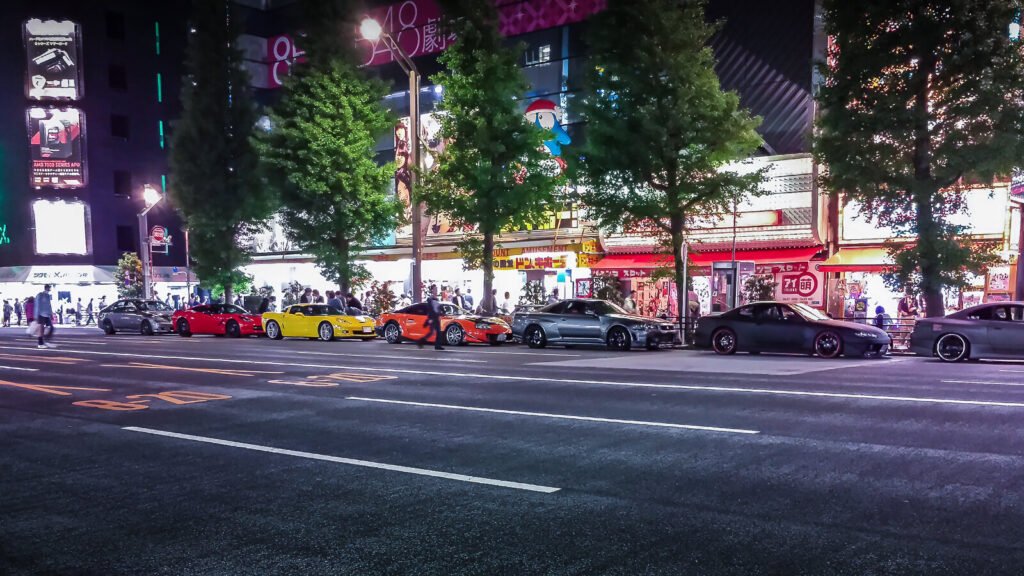
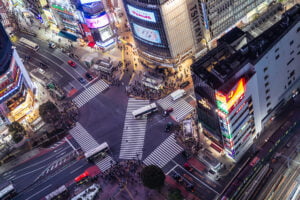
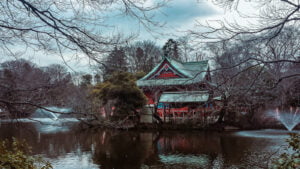

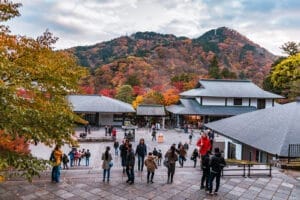
Pingback: Exploring Tokyo: Unveiling Top Attractions and Hidden Gems - airashijapan.com
Pingback: Harajuku Japan: A Trendsetter’s Haven - airashijapan.com
Pingback: Navigating Tokyo Transportation efficiently - airashijapan.com
Pingback: Explore Tokyo: Japan's Busy Capital & Urban Wonder
Pingback: Exploring Kagurazaka: A Tapestry of Tradition and Modernity in Tokyo - airashijapan.com
Pingback: Spring in Tokyo: Sakura Dreams at Shinjuku Gyoen - airashijapan.com
Pingback: Best Places to See Autumn Foliage in Tokyo - airashijapan.com
Pingback: Yanaka: Old-World Charm and Quaint Streets - airashijapan.com